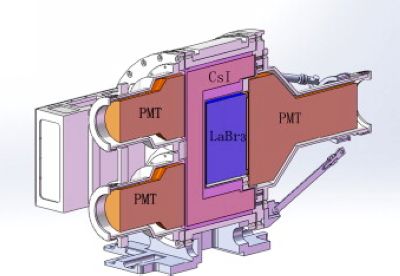Chang’E-2 Gamma-ray spectrometer (GRS) is included in the payload of Chinese second lunar mission Chang’E-2 that has been launched in Oct, 2010. Specific objectives of the GRS are to map abundance of the elements on the lunar surface, to depths of about 20cm. The energy resolution and detection efficiency were improved compared with Chang’E-1 GRS. We will describe the design of GRS and present its performance in this paper. Moreover, the initial result of Chang’E-2 GRS is reported.
The first job of the GRS is to collect cruise spectrum after the instrument is powered on and the count rate of the spectrum is recorded. We calibrated the instrument for one month to testify the performance and get characteristics of the GRS. For the next 7 months the instrument continually worked to collect data. The calibration results manifest a good performance during the mission.
The initial result of data analysis is reported. The total gamma spectrum from the moon showing the energy of the peak relating to the elements on the lunar surface (see figure 1) and the high resolution map of radioactivity elements (see figure 2) on the lunar surface were presented.

By with MA Tao
The GRS has a geometry area with a diameter of 10.8 cm. It is body-mounted to the spacecraft and relies on a passive thermal design. Anticoincidence crystal is made of CsI, of which the anticoincidence efficiency to low energy photons is about 30%. The GRS consists of two parts, gamma-ray detector (GRD) and electronics control box (ECB). There are also two cabling harnesses connected with them. The GRD includes all the scintillation detectors and photomultiplier tubes (PMT). The high voltage electronics box and preamplifiers are also installed on the GRD. The data processing unit executing all instrument software is included in the ECB, which provides the digital interface, power supply and control.
In the paper, a good energy resolution gamma ray detector (GRD) with a large effective area is presented, which was able to work for a long-duration mission and provide sufficient sensitivity and resolution to map the material of lunar surface.
The work by MA Tao, CHANG Ji has been accepted to be published in the Nuclear Instruments and Methods in Physics Research Section A: Accelerators, Spectrometers, Detectors and Associated Equipment,please see Nuclear Instruments and Methods in Physics Research Section A, 726,113-115 for more details (http://www.sciencedirect.com/science/article/pii/S0168900213007766)
